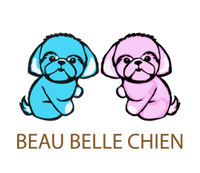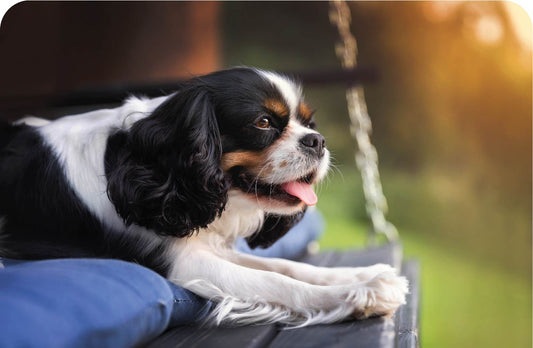When you have a dog, the big question is often "what breed should it be?". Many dog owners love a particular breed, perhaps because they grew up with it as a child or because one's childhood friend had one. But for new dog owners who are not quite determined yet, it can be a bit of a jungle to find your way around.
There are Many Questions to be Answered
How big should the dog be, how active should it be, how much training does it need, is it easy to train or very independent, does it shed a lot, is it good as a family dog or is it not good for children? There are many questions to be answered, but one must also remember to take a look at one’s own life. How much time do you have for the dog, if you want a very smart and active dog, you must be set on a lot of training. Of course, all dogs need to be trained and socialized, but some dogs have a higher level of activity than others.
The 10 Official Groups
FCI which is the International Association of Kennel Clubs has divided all dog breeds into the following 10 official groups. Through these groups you can get an overview of the types of dog breeds.
Group 1: Shepherd and Cattle Dogs
In this group you will find dog breeds that were originally bred to shepherd and guard other animals such as cattle and sheep. They are therefore bred to be intelligent, active and alert dogs that require a lot of training in the form of, for example, shepherding, obedience, rally or agility. If you have the time and an active lifestyle so that you can cover their extremely high activation needs, dog breeds in this group are an ideal training partner and work well as pets and family dogs.
In this group you will find, among other things:
Border Collie
German Shepherd
Old English Sheepdog
Kelpie
Group 2: Schnauzer, Pinscher, Molosser and Sennenhunde
In this group you will find many different dog breeds and preferably the very large ones. These are also dogs that were originally bred to shepherd or guard as farm dogs, which is why they require space and outdoor areas. They are not suitable for city dogs and should preferably have a purpose in life as the working dog they once were. Therefore, be prepared for large amounts of training and activation. If you can activate it and cover its needs, you get a fantastic faithful and loyal dog who protects his family in thick and thin.
In this group you will find, among other things:
Rottweiler
Mastiff
Sankt Bernhardshund
Great Dane
Group 3: Terrier
In this group you will find all the terrier breeds, most of which are originally from the UK and are bred to hunt smaller animals such as foxes and rats. In the "old days" when fox hunts for horseback were extremely popular in the UK and you had the big fox hounds with you, it was quickly found out that some smaller but still nimble hunting dogs were needed, as they had easier access to the fox caves. Terriers are therefore hunting dogs and some of them still have great hunting instincts, are extremely nimble and have a high level of activity. One must not be fooled by their small sizes and one must therefore be set on a lot of training and early socialization. That being said, they are often very social and friendly and therefore good family dogs.
In this group you will find, among other things:
Border Terrier
Jack Russel Terrier
Scottish Terrier
Irish Terrier
Group 4: Dachshunds
in this group you will find all the different types of dachshunds. They are originally from Germany, are hunting dogs with a great hunting instinct and are very versatile. They are, despite the small breed, like the terriers, very active and need to be activated and trained. Early socialization is important in these dogs as they can be a bit temperamental. If you are willing to train and socialize from an early age, they are good pets as they are often friendly and can grow old.
In this group you will find, among other things:
Rough-haired Dachshund
Short-haired Dachshund
Miniature Dachshund
Dwarf Dachshund
Group 5: Pointing Dogs
In this group you will find various spitz dogs that originally originate from cold climates. They have been used as hunting dogs to hunt everything from bears to moose, and as sled and draft dogs. The dogs in this group vary in size, but common is that they are very active, can be enormously independent and mentally strong and enduring. They therefore require that you know what you are doing and are prepared for the training to take time. These dogs are not the typical "labrador type" waiting for an order and thus a treat.
In this group you will find, among other things:
Siberian Husky
Samoyed
Alaskan Malamute
Eurasian
Group 6: Drifting Hunting Dogs and Welding Dogs
In this group you will find hunting dogs and a few search and tracking dogs. These dogs are originally bred for bird hunting, small game hunting and large game hunting, depending on their size where they drive the game to the hunter. So you will find dogs in this group of different sizes, but common to them all is that they are hunting dogs and extremely active. They must therefore be trained and activated a lot to meet their needs for both physical and mental activation. Preferably in the form of sports training, obedience or hunting training. Many of the breeds in this group work well as family dogs when properly trained and activated.
In this group you will find, among other things:
Finnish Dust
Bloodhound
Beagle
Rhodesian Ridgeback
Group 7: Standing Hunting Dogs
In this group you will find the English and continental standing hunting dogs that seek out the game and mark opposite the hunter. Many of the dog breeds in this group are still actively used as hunting dogs today, but are also popular as family dogs. They are typically of medium-large size and generally some extremely nice dogs. They need to be activated a lot and properly, but are easy to train as they are nimble and friendly. Due to their great hunting instinct, they can be a bit difficult to summon if they get the hang of game (if they are not trained enough).
In this group you will find, among other things:
Irish Setter
Pointer
English Setter
Breton
Group 8: Retrieving Hunting Dogs
In this group you will find the popular retrieving hunting dogs which are bred to search for and hand over the game to the hunter. They retrieve both from land and from water, so they are usually quite happy with water. They are also good tracking dogs. They have a high level of activity and need the right activation in the form of nose work, long walks are not enough - they have to use their nose and brain to meet their needs. If you can give them the right activation in the form of, for example, track work, they work really well in a family as family dogs.
In this group you will find, among other things:
Labrador Retriever
Golden Retriever
Cocker Spaniel
Welsh Springer Spaniel
Group 10: Companion dogs
In this group you will find dog breeds that were originally bred to be companion dogs and keep their owners company. The companion dogs are friendly, social and suitable as occasional dogs in urban areas. Even though they are companion dogs, they still need to be trained and activated, the better an activated dog you have the better in balance the dog is.
In this group you will find, among other things:
French bulldog
Bichon Havanais
Pug
Papillon
Each group contains more dog breeds than the four listed in each group.



